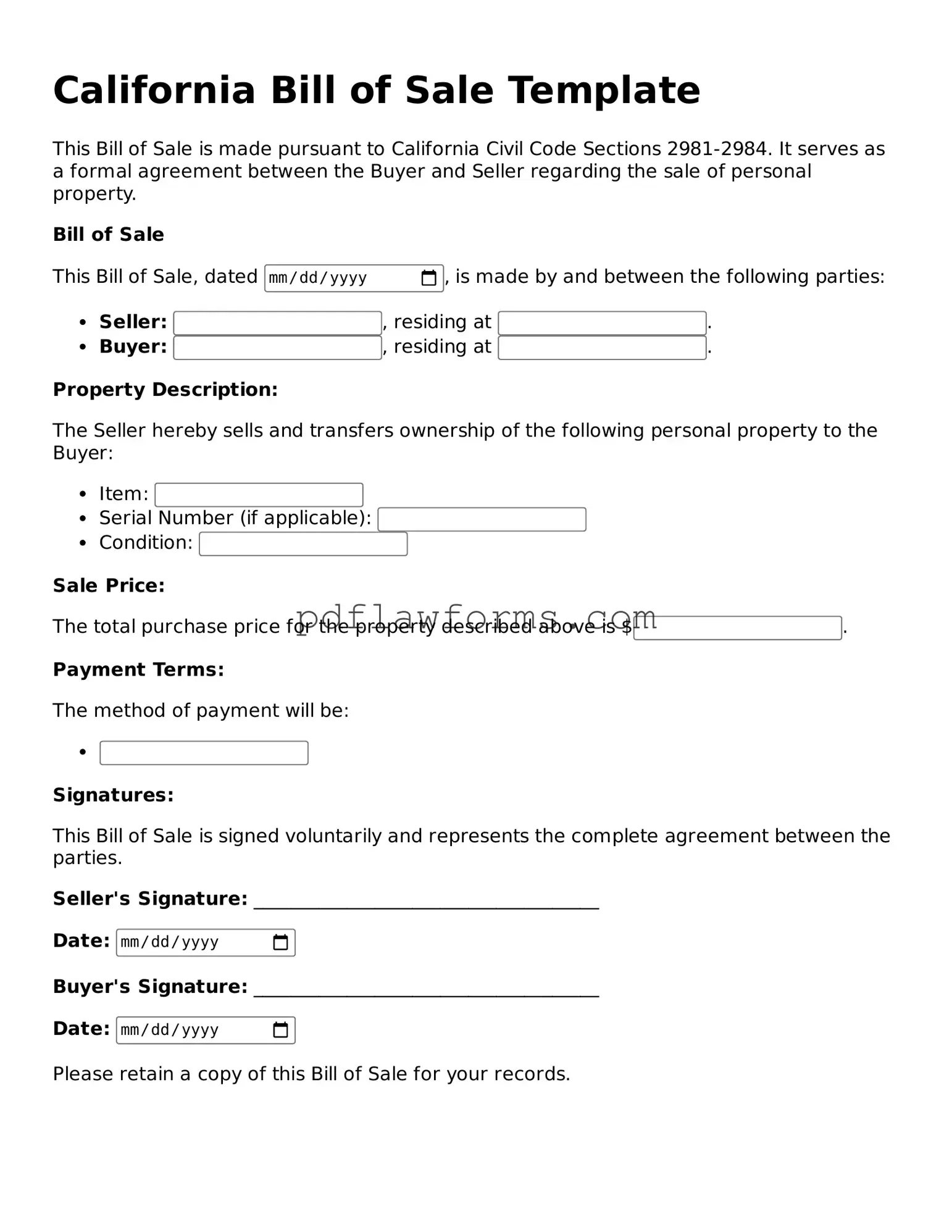Bill of Sale Form for the State of California
The California Bill of Sale form is a legal document used to transfer ownership of personal property from one party to another. This form serves as proof of the transaction and includes essential details such as the buyer's and seller's information, a description of the item, and the sale price. Completing this form is important for both parties to ensure a smooth transfer of ownership.
To fill out the form, click the button below.
Make My Document Online
